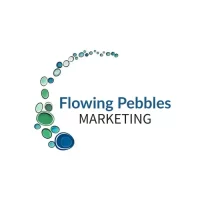You’ve got your brand voice figured out. You’ve started creating content. You’re posting on social media, and maybe you are even sending email newsletters. But there’s one question that can make or break everything you’re doing.
Who are you really talking to?
How you answer that question is revealing. It quickly shows whether you are clearly understanding your audience.
And one answer I hear all the time when working with small business owners is:
“My product (or service) is for everyone!”
I get that you’re passionate about what you have. Whether you are selling a product or providing a service, everyone could benefit from it. But it’s important to recognize that when you try to talk to everyone, your message becomes too generalized and ends up connecting with no one.
While anyone could use your product or service, not everyone will. Your ideal customers are the ones who love your brand, share your posts, and keep coming back. They are a very specific group. And knowing exactly who they are? That’s where you will make your real connection.
Why Understanding Your Audience is Important
Before you write another word, press record, or create a post, you need to know who your audience is and what they care about.
When you understand your audience, you can:
- Speak their language.
- Solve their specific problems.
- Build trust faster.
- Create content that feels made for them.
Think about it. Would you talk to a loyal, repeat customer the same way you’d talk to someone who had just discovered your business? Probably not.
That’s the power of understanding your audience! You can tailor your tone, timing, and message, so each piece of content connects where it counts.

Why I Created Brand Personas Using Artificial Intelligence (AI)
When I reformed my company and further narrowed down my niche, I realized that I needed to do more than refine my services. I needed to clearly define who I was providing those services for.
Like many small business owners, I felt like I had a good sense of my audience, but I wanted a deeper understanding of what really mattered to them. What were their goals? What were their challenges? What motivated them?
I wanted to visualize real people engaging with my content. After all, they are the ones reading my posts and working hard to grow their businesses.
Understanding your audience is the foundation of effective content marketing. It’s the key to content that connects. But knowing it is not the same as applying it in real-life. So, I created brand personas using AI tools. These were fictional yet realistic profiles representing my ideal clients.
Each brand persona has a story, goals, challenges, and even personality traits that reflect the real people I serve. They are the small business owners trying to find their voice, strengthen their brand, and make their marketing efforts work.
These personas have become my creative compass. I use them when brainstorming blog ideas, writing captions, or planning new offers. I feel that it’s made a huge difference in how I write and how my content connects. Because now, every post feels like I’m speaking directly to someone who needs what I have to offer.
Finding Creative Ways to Learn About Your Audience
As a content marketer, using AI was one enhancement I made to better understand my audience. It helped me see their patterns, articulate their pain points, and connect with them more authentically. It also pushed me to explore new ways to work smarter and demonstrate what’s possible.
But that doesn’t mean AI is the only way to get to know your audience better. You don’t need specialized tools or complex research methods to gain valuable insights. What matters most is taking the time to really understand your audiences’ needs, goals, and motivations.
Even small, consistent efforts can make a big difference. Plus, all you need is a little curiosity and a willingness to listen.

Simple Actions for Understanding Your Audience
If you’re not sure where to begin, don’t overthink it. Taking small, intentional actions can help you see your customers as real people, and not just as shadows in your marketing.
Here are a few easy ways to get to know them better:
Start conversations with your customers.
Conversations are one of the easiest and most valuable ways to learn about your audience. When you talk directly to your customers, listen more than you speak and focus on the stories they share.
Ask questions like:
- How did you first learn about our business?
- What were you looking for when you reached out to us?
- What made you choose us instead of another option?
Their answers often reveal insights you won’t find in data. In addition, they’ll help you create content that resonates with the people who matter most.
Listen where they hang out.
Join Facebook groups, online forums, or local business pages where your ideal customers spend time. The goal is not to sell but to listen and learn.
Pay attention to things like:
- What questions are they asking?
- What words do they use to describe their challenges?
- How do they talk about solutions, and what frustrates or excites them?
These real conversations give you authentic insight into your audience’s world. This kind of listening, often called social listening, is simply paying attention to what your audience says online so you can better understand their needs, challenges, and priorities.
The insights you gather here are gold nuggets, and they’ll come in handy for the next step.
Create your own personas.
You don’t have to get fancy. Even a simple sketch of who your customer is, with their goals, interests, and pain points, can help you create more focused, meaningful content.
Personas aren’t meant to box you in. They’re meant to bring clarity to who you’re talking to.
Start by asking yourself simple questions like:
- Who is my ideal customer?
- What challenges are they trying to solve?
- What motivates their decisions?
- How does my product or service make their life easier?
Look at your data.
Your data tells a story, but you need to know how to read it. Once you’ve talked to your customers and listened to what they are saying, take a look at what the numbers tell you. Your website, social media, and email reports can add context to what you’ve already learned. Ask yourself:
- What content gets the most engagement?
- Is that content tied to my products or services?
- What topics spark replies, clicks, or shares?
- What is my audience telling me about what matters to them?
Just know, engagement alone can be a vanity metric. A post might get likes without driving real results or attracting your ideal audience. The real gold lies in who is engaging and why.

Using Insights to Connect
Once you know who you’re talking to, everything changes. Your blog posts become more focused. Your social captions sound more genuine. Your emails get opened.
When you create content that speaks directly to your audience instead of trying to accommodate everyone, it resonates, builds trust, and moves your business forward. The more focused and genuine your communication, the stronger your connection becomes.
Remember, understanding your audience is the foundation of your marketing strategy. It makes your content more personal, purposeful, and profitable. So, when you sit down to write a post or plan your next campaign, ask yourself:
Who am I talking to — and what do they need to hear right now?
That simple question is where marketing magic begins.
Small Steps. Big Impact
You are not always going to have it figured out. But start small with one conversation, one insight, one tweak to your content at a time. The more you learn about your audience, the more you realize it is the key to content that connects. It becomes easier to create content that doesn’t just attract attention. It builds lasting connections.
If you’re not sure where to start by defining your audience or creating your own brand personas, I can help. My content marketing services are designed to help small business owners build authentic, strategy-driven content that attracts, engages, and connects.
Together, we’ll turn what you know about your audience into content that feels genuine and grows your business with purpose.



